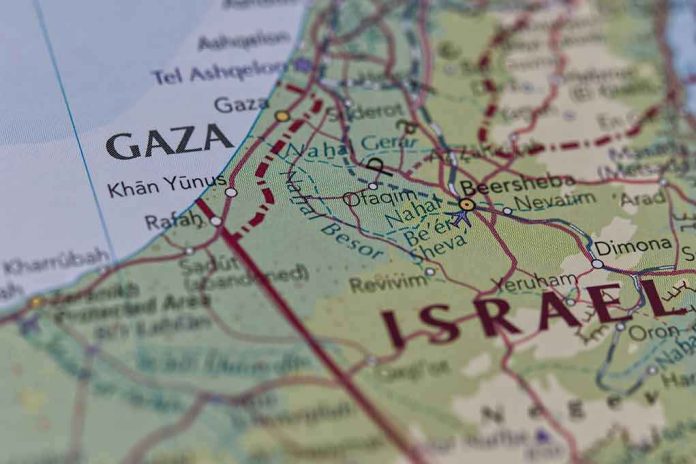
A new wave of Israeli airstrikes in Gaza, resulting in the deaths of 24 individuals, including children, raises crucial questions about ongoing military operations and their humanitarian impacts.
Story Snapshot
- Israeli airstrikes have killed 24 people and injured 54 in Gaza, including children.
- The strikes are part of ongoing military operations responding to past Hamas attacks.
- Humanitarian conditions in Gaza continue to deteriorate with severe shortages of essentials.
- International scrutiny over civilian casualties remains high amid calls for accountability.
Continued Military Operations in Gaza
On November 2025, Israeli airstrikes in Gaza resulted in 24 fatalities and 54 injuries, marking a continued pattern of military operations in the region. These airstrikes are part of Israel’s broad military response to the October 2023 attack by Hamas, which resulted in significant Israeli casualties.
The ongoing conflict has led to repeated airstrikes and ground operations, leaving Gaza’s densely populated civilian areas vulnerable to further violence.
Humanitarian agencies have expressed concern over the humanitarian conditions in Gaza, which have been worsening due to ongoing hostilities. The blockade and destruction of infrastructure have caused severe shortages of food, water, and medical supplies.
This has exacerbated the plight of Gaza’s civilians, who are already suffering from the devastating impacts of repeated military actions and a lack of basic necessities.
Civilian Impact and International Reactions
The Israeli Defense Forces (IDF) maintain that their operations target Hamas and other militant groups, but the high civilian toll has drawn international condemnation. UN agencies and human rights organizations have called for investigations into potential violations of international law due to the significant number of civilian casualties, including children. These events underscore the human cost of the ongoing conflict and the urgent need for effective humanitarian interventions in Gaza.
Amid this crisis, Gaza officials and health authorities continue to update casualty figures, highlighting the challenges faced by medical personnel in providing care amid shortages and infrastructure damage. Meanwhile, international organizations are advocating for ceasefires and increased humanitarian access to alleviate the dire conditions faced by Gaza’s two million residents.
Long-term Implications for Gaza and the Region
The ongoing hostilities in Gaza present both short-term and long-term challenges. In the short term, the loss of life, injuries, and psychological trauma are immediate concerns. In the long term, the destruction of infrastructure, generational trauma, and disruption of essential services such as education and healthcare pose significant barriers to recovery. The conflict has also led to increased polarization and challenges to peace negotiations, affecting not only Gaza but the broader region.
Gaza officials report at least 24 killed and 54 wounded, including children, in Israeli airstrikes https://t.co/6RXv1V9PZW
— Cornelius Duncan (@corndnc12) November 23, 2025
Efforts to resolve the conflict remain complicated by deeply entrenched political grievances and power dynamics. Israel’s military superiority and control over access to Gaza contrast with Hamas’s local authority, creating a complex battlefield where international actors struggle to exert influence. As such, the pathway to sustainable peace and resolution remains fraught with obstacles, necessitating a renewed focus on diplomatic solutions and humanitarian support.





